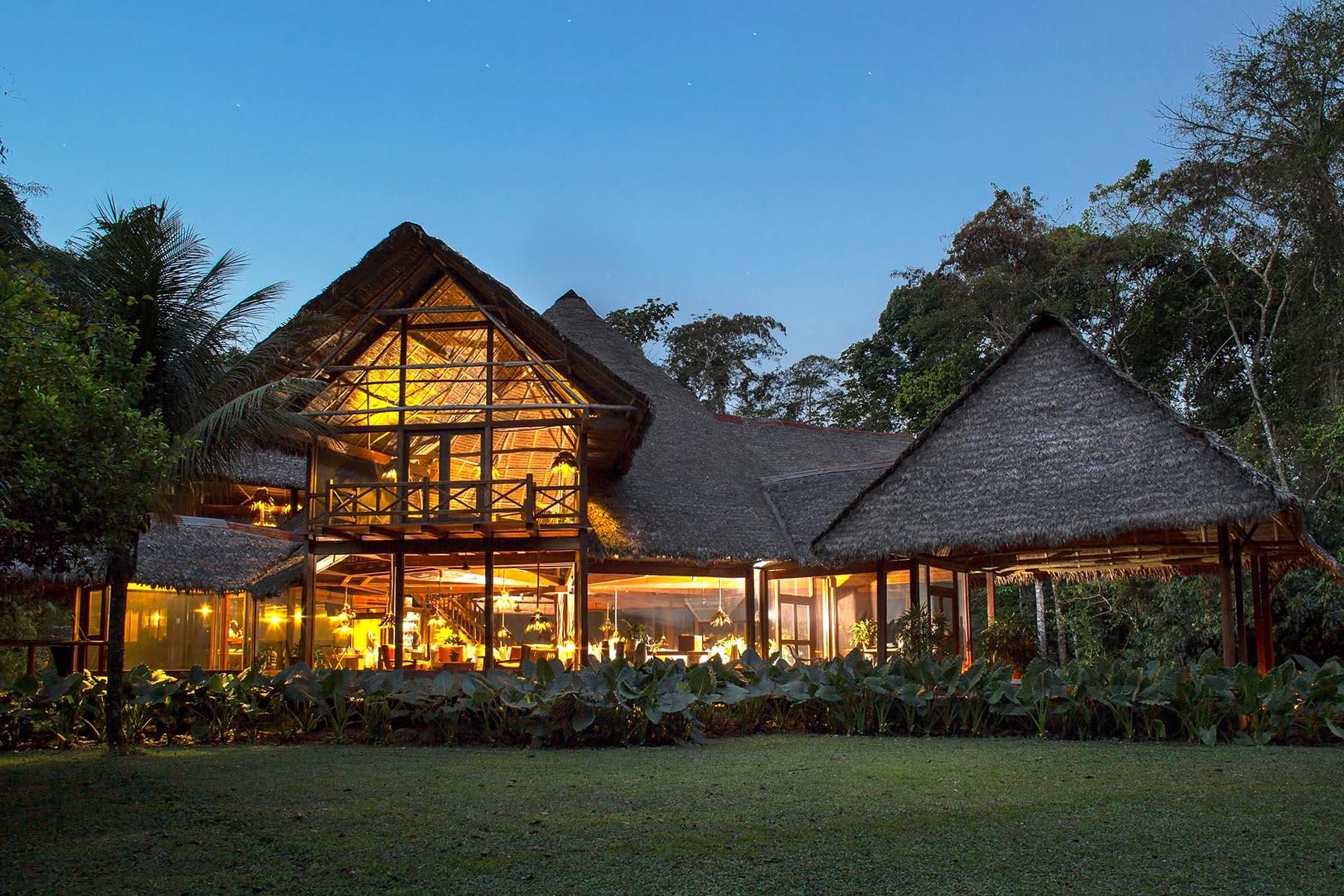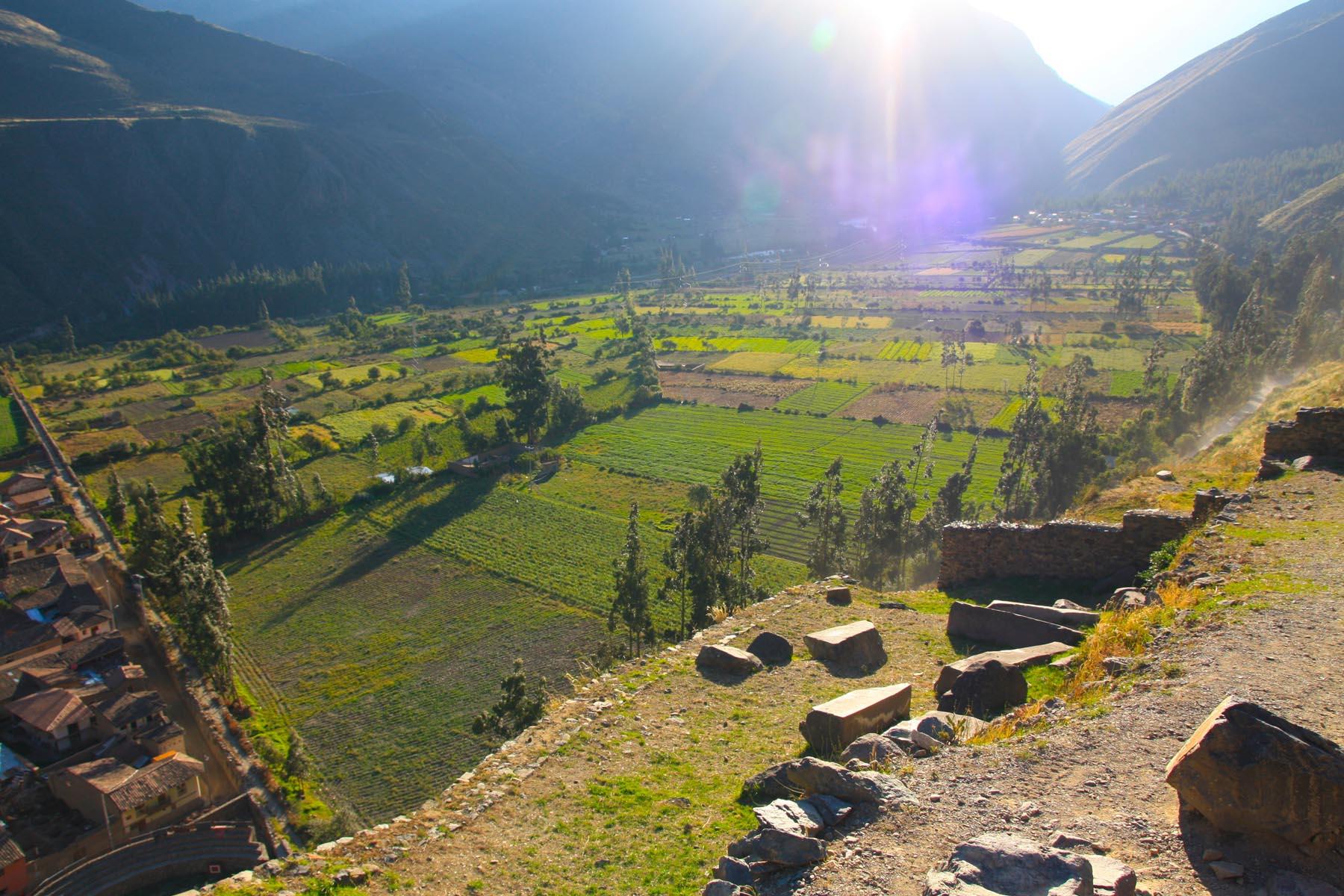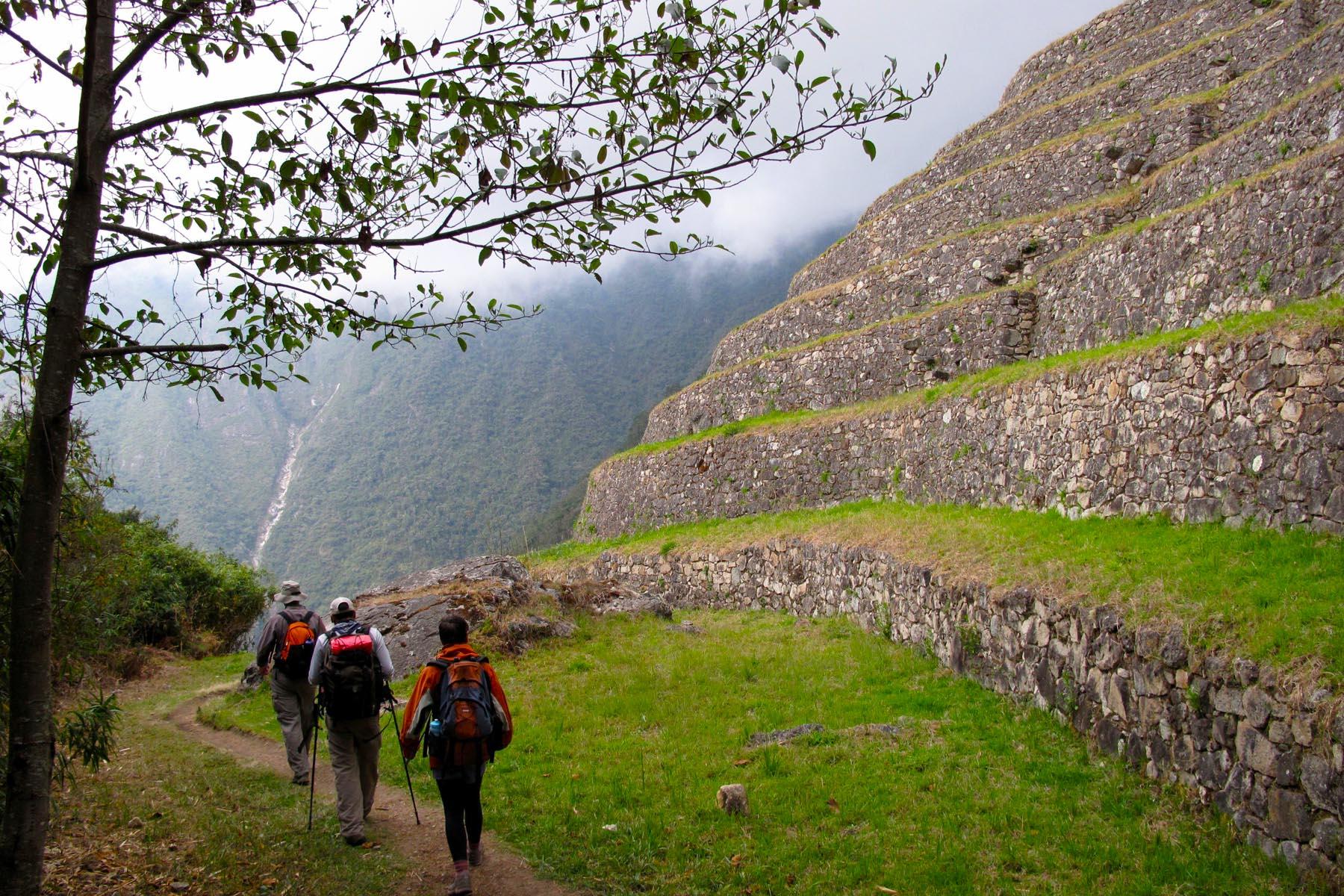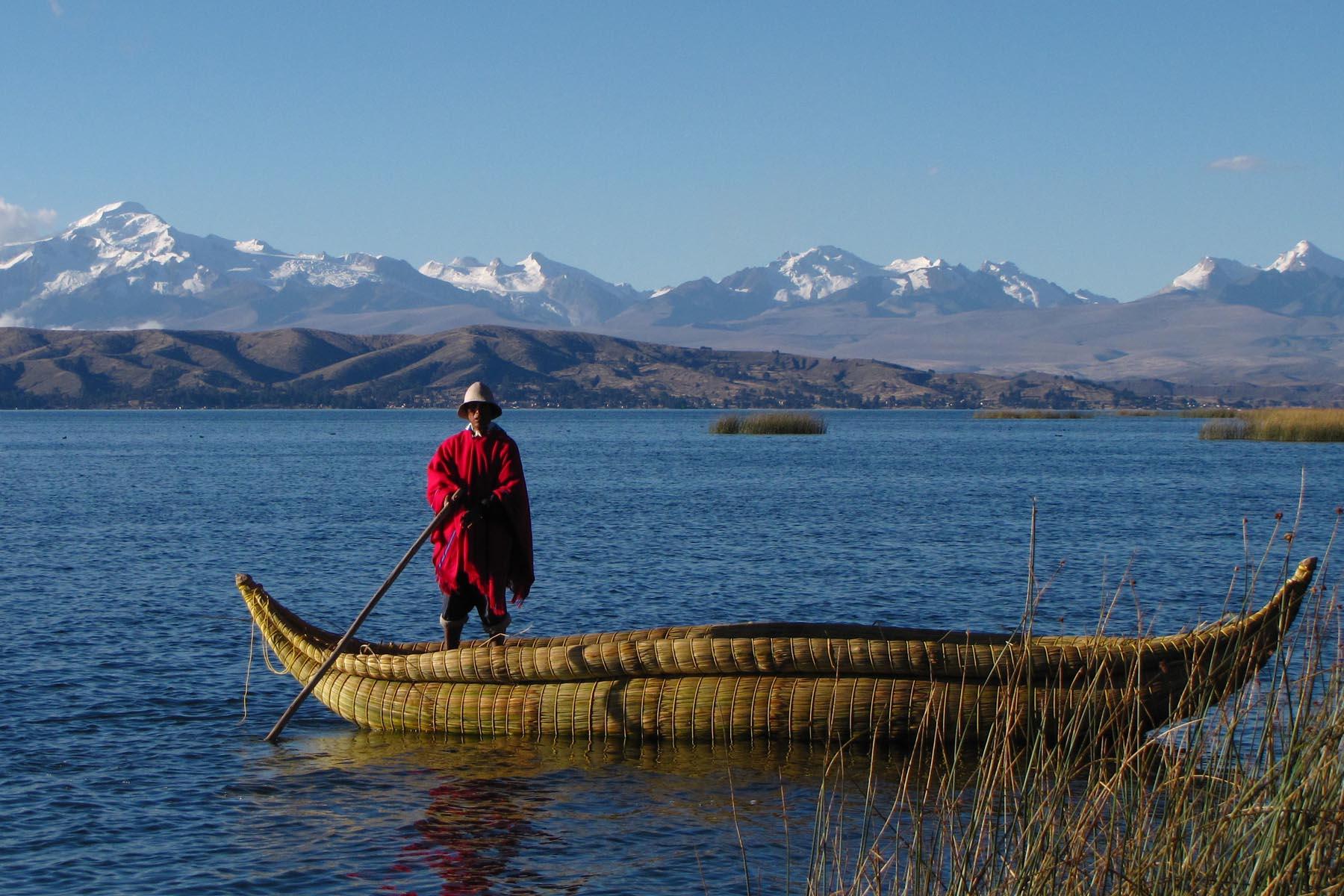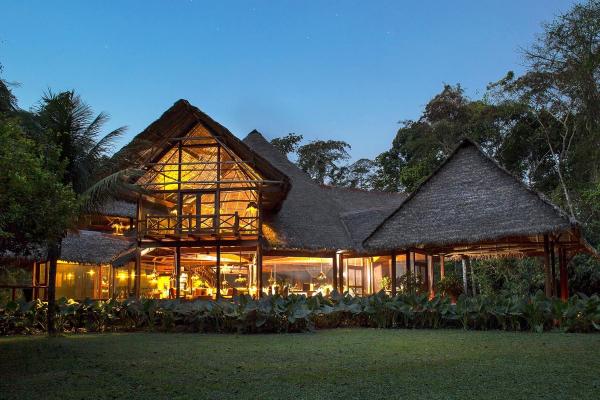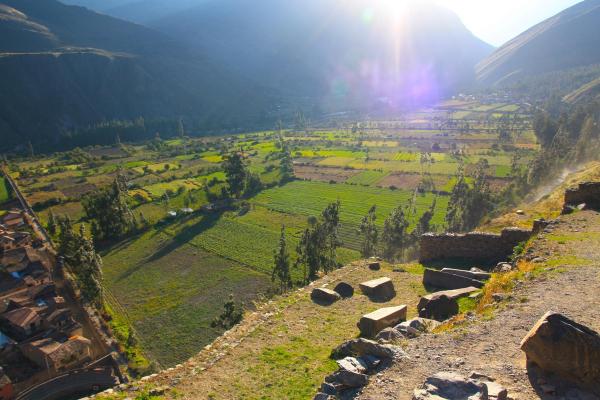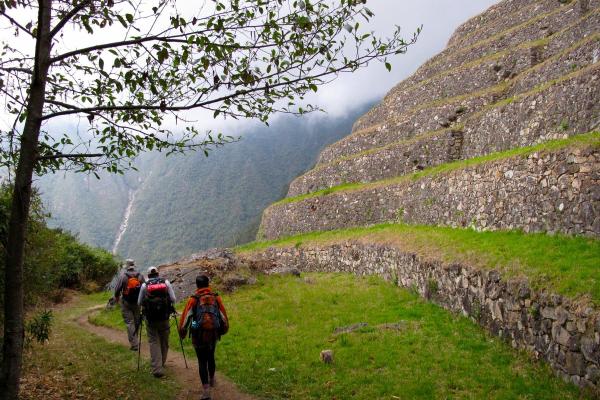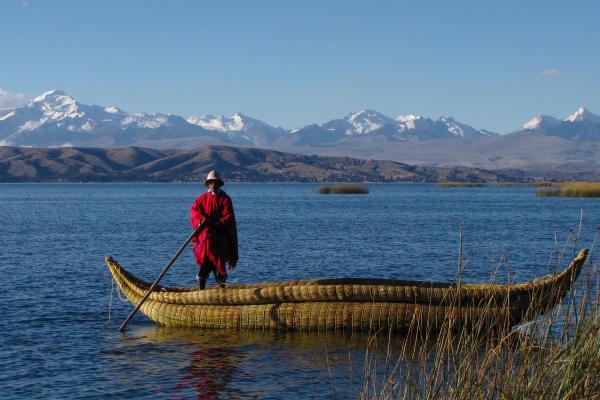Amazon Inca Trail & Lake Titicaca
$1980.00/From
The magic of this ancient country allow us to see the blends of tradition and culture. You will be transported to the main cities of Peru, to share the ancient culture with its ancestors. You will test enjoy dishes typical for each city, explore the Amazon jungle and see the different species of animals and plants in the area, walk right through the road built by the Incas, visit the lost city of the Incas, learn and share the tradition of the Aymara people, come and join us on this unique trip!
Quick Itinerary
- Day 01: Lima
- Day 02 - 03: Amazon Trips
- Day 04: Cusco
- Day 05: Sacred Valley
- Day 6 - 9: Inca Trail
- Day 10: Cusco
- Day 11: Puno
- Day 12 - 13: Titicaca Lake
- Day 14: Puno
- Day 15: Departure day
Included Highlights :
- Guided tour of Peruvian Amazon
- Sacred Valley guided tour
- 4 day hike with professional guide, chef and porters
- Guided tour of Machu Picchu
- Walk around the city of Cusco
- Visit the main sites of Puno
- Learn the traditions of Lake Titicaca
- Visit and explore Uros, Amantani and Taquile island
- Guided tour of
| Crew | Travel Tour Group representative in Cusco and Local guide in the Inca Trail |
| Accomodation | Camping 03 nights. |
| Meals | 03 Lunches, 03 Dinners, 03 Afternoon Tea, 03 Breakfasts. |
| Transportation | Private transportation, van, train |
Tour Plan
Day 01: Lima
Arrival to the city of Lima, there are no planned activities.. When will arrive to airport, please seek your name, a Tierras Vivas representative will wait for you and will take to the hotel.
Known as the City of Kings, Peru’s capital city Lima was founded by Francisco Pizarro on the Day of the Three Kings (Epiphany) in 1535. The Plaza de Armas is the heart of old Lima, and it is here you find the Cathedral, Government Palace and Archbishop’s Palace
Day 2 - 3: Peruvian Amazon (2B, 2L, 2D)
Fly to Puerto Maldonado, deep in the peruvian jungle, the Amazon. Travel by motorized canoe through Madre de Dios river to our lodge settled deep in the jungle. On our journey to the lodge, you will have the chance to see bird species typical of the river or forest edge.
The jungle lodge combines native architecture and materials with low-impact, trying to preserve the environment and the ecology. The lodge rooms are simple but comfortable, with mosquito net for individual beds, flush toilets, showers, but no hot water, and kerosene lamps for lighting, there is no electricity. Local community members make up the majority the lodge staff, including multilingual naturalist guides.
Explore the amazon with local guides, About half of Peru is located within the Amazon Basin, however, due to its isolation, not a lot of it is available to the casual traveller. Puerto Maldonado is the region’s principal city and is serviced by air from the capital and from Cuzco. The town is situated at the confluence of the Madre de Dios and Tambopata Rivers, and is a bustling, booming tropical frontier town. Its principal activities are gold mining, Brazil nut collecting, timber extraction, agriculture and ecotourism. After a brief stop in the town we depart on an afternoon boat trip by motorized canoe to our jungle lodge. Depending on flight arrival times we have either a boxed lunch aboard the boat or lunch upon arrival at the lodge. During our voyage you will have the chance to see bird species typical of the river or forest edge such as Black Skimmers, Pied Lapwings, Capped Herons, Roadside Hawks and several species of kingfishers, swallows, and flycatchers. The Tambopata area includes habitats ranging from the Andean highlands around the rivers' headwaters through some of the last remaining intact cloud forests to the lowland rainforests of the Amazon basin. The area is renowned for its diverse plant and animal populations and include over 1,300 bird species (including 32 parrot species - 10% of the world’s total), 200 mammal species including 4 species of primates, 90 frog species, 1,200 butterfly species and 10,000 species of higher plants—all protected within the reserve. Some of the more famous residents are the Harpy Eagle, the prehistoric looking Hoatzin, tapir, peccary, jaguar, ocelot and playful river otters who live in the area’s oxbow lakes.
Day 4: Cusco (B)
Travel by boat out of the jungle, fly to the Capitla of the Inkas, In Cusco meet your guide and transfer to your hotel. The day is free to relax and explore the fascinating city of Cusco, and to acclimatize to the altitude.
Cusco is considered the meca of Peru. This gorgeous colonial town offers nearby ruins, cobble-stoned streets, museums, churches and a lively atmosphere. The city have several good museums, including the Coricancha and the Archaeological Museum, which also house a small art museum, the Regional History Museum and the Religious Art Museum
Day 5: Sacred Valley (B, L)
Travel with our local guide through the Sacred Valley of the Incas. An important source of food for the Inca, the Sacred Valley is a lush agricultural region that continues to supply the city of Cuzco with much of its produce. Visit the impressive Pisac ruins and the colourful artisan market (market days only). The day trip finishes in the picturesque village of Ollantaytambo, site of another large Inca ruin. Here we catch our breath and prepare for the hike ahead.We spend the night in this small town before heading out for the start of the hike the next morning.
Day 6 - 9: Inka Trail (4B, 3L, 3D, 3A)
The 4-day Inca Trail to Machu Picchu is physically challenging but worthwhile, and the excursion is within the ability of most reasonably fit. It is a 44-km (27 mile) hike, with 3 high passes to be crossed, one of which reaches an elevation of 4200m (13776 ft). The trail is often steep, and it may rain even during the dry season. The temperatures at night may fall below zero, so it is important to come prepared.
Depart Ollantaytambo for km 82 where we begin our walk in the footsteps of the Incas. Our local crew of porters, cook and guide look after us well for the duration of the hike. Porters carry the majority of the gear for the hike, so those passengers doing the hike only carry a small daypack with water, rain gear, snacks, a camera, etc. As you walk the trail that linked this ancient empire, admire breathtaking views at every step as we move from high plateau areas to dense cloud forest. Depending on the season, you may see a great variety of flora, including miniature and large orchids, and fiery rhododendron bushes.
You pass several smaller ruin sites, the first of which is Llactapata. The second day climb the long steep path to Warmiwañusca, or Dead Woman’s Pass. At 4198 m (13769 ft) above sea level, this pass is the highest point of the trek. The second pass of the hike is at 3998 m (13113 ft) where on clear days, we enjoy superb views of the snow-capped Cordillera Vilcabamba. The trail goes through some beautiful cloud forest on the gentle climb to the third pass, where you will walk through a causeway and a tunnel, both original Inca constructions. The highest point of the third pass is at 3700m (12136 ft). On clear days you are rewarded for all this work with
beautiful views of the Urubamba Valley below. Soon you reach the serene ruins of Phuyupatamarca, or the 'Town above the Clouds', at about 3650 m (11972 ft) above sea level. We will camp either here or an hour and a half further along close to Wiñay Wayna (Forever Young) ruins, a grandiose terraced hillside site, with panoramic views of the valley below and just a short hike from MachuPicchu.
On the final day of the hike we climb the steps to the Sun Gate overlooking the peaks that surround Machu Picchu. When the morning is clear, there is no way to describe the feeling of the first views of Machu Picchu, as the mist rises off the mountains early in the morning and the famous site appears in front of you.
Machu Picchu is both the best and the least known of the Inca ruins. It is not mentioned in any of the chronicles of the Spanish conquistadors and archaeologists today can do no more than speculate on its function. The local Quechua farmers in the area knew of Machu Picchu for centuries, but it was not until an 11-year-old boy led the American historian Hiram Bingham (who was in search of Vilcabamba) to the site on July 24, 1911, that the rest of the world became aware of its existence. At that time the site was covered in thick vegetation, and Bingham and his team returned in 1912 and 1915 to clear the growth. Over the years, much work has been done on excavating and studying the site. Despite these efforts, many unanswered questions remain.
NOTE: Those passengers not able or interested in the hike spend 2 days in Cuzco, then travel by train to Aguas Calientes, where they overnight. Next morning they take the bus to the Machu Picchu entrance and rendezvous with the hikers at the ruins. If you decide not to do the hike we need to know prior to your departure in order to obtain train tickets. There is an additional fee for any changes made once Inca Trail permits are confirmed. This fee may vary depending on the changes that are made to your itinerary. Please advise your agent or Tierras Vivas.
Also note that portions of the Inca Trail will be closed for general maintenance during the month of February each year. Also, closures may occur at various times throughout the year due to inclement weather or other conditions beyond our control. During these periods, any tour affected will hike the Lares Trek.
Day 10: Cusco (B)
Cuzco is considered the mecca of Peru. This gorgeous colonial town offers nearby ruins, cobble-stoned streets, museums, churches and a lively atmosphere.
Every year Cuzco attracts thousands of travellers who come to delve into its noble but tragic past. It is the perfect base for optional explorations around the city and area as well as a range of outdoor activities. Relax and explore this fascinating city, and take time.
Cuzco’s numerous colonial churches are one of the city’s most common sights. The Cathedral was started in 1559 and took 100 years to build; it is also one of the city’s greatest repositories of colonial art. Immediately in front of the entrance is a vault containing the remains of the famous Inca historian, Garcilaso de la Vega. Also worth visiting are the churches of La Compañía, La Merced and San Francisco.
While most ruins are just outside of the city, the main ruin within is that of the Coricancha, once the Inca Empire's richest temple. Today the ruin forms the base of the colonial church of Santo Domingo. During Inca times this temple was literally covered with gold, but within months of the arrival of the first conquistadors this incredible wealth had all been melted down. It is left to the individual imagination to envision the magnificence of the original structure.
There are several good museums in Cuzco, including the Archaeological Museum, which also houses a small art museum, the Regional History Museum and the Religious Art Museum. Our best advice for exploring Cuzco is to wear a comfortable pair of shoes, arm yourself with a city map and set off to explore!
Day 11 - 14: Puno (4B, 2L, 1D)
Take bus ride to Puno, on the shores of Lake Titicaca. The next morning we head out by boat across Lake Titicaca.
Located at 3830 m above sea level, Puno is the highest altitude of any place we sleep on the tour. As a result the weather can be extreme with very cold nights and a strong sun during the day (don’t worry, if you get cold, buy an alpaca sweater from the market they are inexpensive here). Puno is also known for its wealth of traditional dances: there are up to 100 different varieties, usually performed in the street processions celebrating Catholic feast days. If you are fortunate enough to be visiting at the right time you may even catch one of these celebrations.
A popular optional activity in Puno is a visit to the spectacular chullpas (funerary towers) of Sillustani, a pre-Inca archaeological site only a short drive away.
Titicaca is also the largest lake in the world above 2000m, and the views from both Amantaní and Taquile Islands are stunning.
This morning we board a boat on Lake Titicaca. We head to Taquile Island for lunch in a local restaurant and the chance for some shopping in the local weaving cooperatives. From there we head to Amantani where we overnight with a local family and enjoy typical music of the area. The following morning we will visit the floating islands of Uros en route to Puno.
The Totora reeds that grow in the shallows of the lake are used for making everything from the islands themselves to the model boats that the islanders sell. The islands are made up of layers upon layers of reeds; as the layers closest to the water start to rot, they are replaced with fresh reeds on top. The reeds are also used to build their boats, which if constructed well will last up to 6 months.
The people of Taquile Island's unique culture, style of dress and lifestyle make for a memorable visit. The men of the community do all the knitting, as this is strictly a male domain, while the women do the spinning. High quality, locally knitted goods are available for purchase at various cooperatives on the island. Despite the short distance that separates the two islands, Amantaní is quite distinct. Its soil is a rich terra cotta red, due to the high iron deposits, and the colour contrasts brightly with the deep azure blue of the lake and sky and the greenery of the local crops. For the night we split into smaller groups and billet into family homes to experience their style of living first-hand.
The following morning we visit the Uros, Amantani and Takile island is on our way back to Puno.
Day 15: Departure day (B)
Departure day, transfer to the airport or good time to extend your trip.
Included & Excluded
Details about services not included and details not included in our packages, if you have any questions please contact us.
- Airport arrival and departure transfer.
- Accommodation; Hotel 3 star (08 nights), Lodge (02 nights), Camping (03 nights), Homestay (01 night).
- All entrance fee according to itinerary.
- Profesional guide throughout as per itinerary.
- Meals: 08 Lunches, 06 Dinners, 03 Afternoon tea, 13 Breakfasts.
- Porters for carrying all heavy gear and 7 kg passenger equipment.
- Chef.
- Camping equipment: Double tent and sleeping roll mat.
- Sleeping bag (-5 grades).
- Blanket and Pillow
- Duffel bag and day pack
- Rain poncho
- Domestic flights (LIM - PEM - CUZ/ JUL - LIM).
- Tourist transport along to the route.
- Tourist train EXPEDITION from MachuPicchu town to Ollantaytambo.
- Tourist bus down to MachuPicchu town.
- Motorboat to Titikaka Lake
- Pre & post tour and accommodation.
- International flight and departure tax.
- Meals not detaileds.
- Travel insurance.
- Tips, baggage portage and other extra not specified.
Meals budget: Allow USD 200 - 250 for meals not included.
Single room: Please note that if you have booked the "Single Room" option for this tour, you will receive your own single room or tent for all night stops and including to the Inka Trail.
Local flights: All local flights are included in the cost of your tour unless otherwise noted. It is important that we have your passport information at the time of booking in order to process these tickets. Internal flight tickets are issued locally and will be given to you prior to the flight departure.
Packing List
Comfortable/ warm /lightweight/sturdy footwear. Remember you will be walking for four days, so trail shoes or cross training shoes are ideal, or hiking shoes in the rainy season. Also it can get very chilly on the trail so it’s best not to wear flip flops if you don’t want cold toes! Good idea to break them in before the start of the trail!
- First aid kit. This could come in handy, and also make you popular with the rest of your group!
- A torch. Extremely useful. Don’t forget new batteries.
- Windbreaker /rain jacket
- Water bottle
- Lip balm
- Sunblock/hat/sunglasses
- Waterproof clothing, such as a plastic poncho. To keep you warm and cosy, you will find them at a great price locally.
- Passport. A must on the Inca trail.
- Silk sleeping bag liner. Will provide you with extra warmth.
- Small lightweight umbrella.
- Plastic bags. Wrap your belongings in plastic bags to keep them dry.
- Toilet paper. Also smaller bags for rubbish, which you can then throw in the main rubbish.
- Warm night clothes. Fleece, long pants, wooly hat, gloves.
- Thermal underwear
- High calorie snacks. Just in case.
- Swimwear. For Aguas Calientes
- Flip flops/thongs/sandals. Will come in useful when showering.
- Water purification tablets
- A little money (in local currency) to buy water and snacks
- Altitude can be a problem on the Inca trail. Locals swear by chewing on coca leaves, or you can use western medicine such as Diamox.
- Pace yourself. It is not a race and you will feel better and enjoy the trail more if you take it slow. Prepare your body for the hike beforehand, cardiovascular work is a great preparation.




